Bernard Kouchner former French Minister of Foreign Affairs © Wikicommon
Many years ago, when he was a Socialist member of the European Parliament, Bernard Kouchner, co-founder of Médecins Sans Frontières, told me that the best way to solve the problem of immigration is to improve living conditions in what are now poor countries so much that nobody will want to leave them in favour of an uncertain welcome in Europe. Alright, so you’d also have to settle the problems in conflict zone countries, too, but surely that’s not impossible?
Sounds like simple common sense. So why isn’t it happening? Public indifference, perhaps? There is the thirst for power of would-be leaders, the dishonesty of many existing leaders, international criminal gangs, and western governments too nervous to intervene in case migrants turn up on their doorsteps and they get the blame. Oh, and an over-timid European Union.
This latest row concerns a plan announced by the President of the European Commission, Ursula von der Leyen, and her team in September 2020. Its aim was to end the overcrowded refugee camps with their appalling sanitary and security conditions. The announcement came only a couple of weeks after a devastating fire tore through the Moria camp on the Greek island of Lesbos.
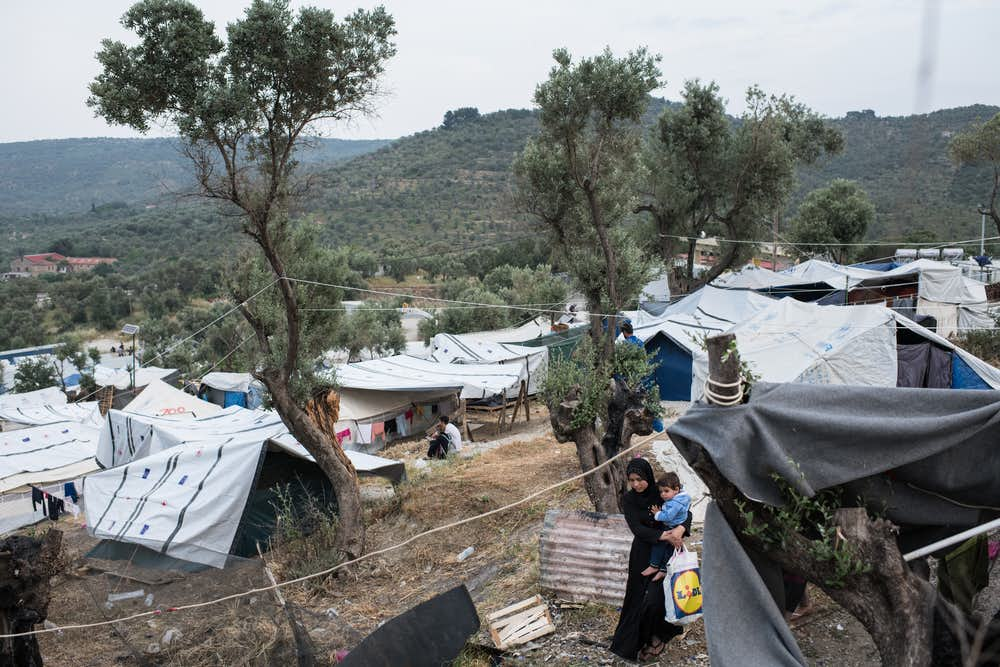
That camp, which was intended to hold 3,000 migrants in fact housed some 13,000 migrants, mostly from Afghanistan. Part of the new plan is intended to strengthen the EU’s external borders and also to persuade reluctant anti-immigrant countries – mainly but not exclusively in Eastern Europe – to bear their share of the burden. “We are proposing today a European solution, to rebuild trust between Member States and to restore citizens’ confidence in our capacity to manage migration as a Union,” President von der Leyen told MEPs. “The EU has already proven in other areas that it can take extraordinary steps to reconcile diverging perspectives. We have created a complex internal market, a common currency and an unprecedented recovery plan to rebuild our economies. It is now time to rise to the challenge to manage migration jointly, with the right balance between solidarity and responsibility.” It was always going to be a hard sell. Furthermore, the plan, which involves more than 500 pages of documents (no EU plan is ever economical with words or paper) may not survive the complicated procedures needed to bring it into law. It includes, as it has to, financial inducements to countries to accept asylum seekers. Bribing recalcitrant governments has been shown to work in the past. In this case, it’s the old ‘do-what-we-want-and-we’ll-pay-you-for-it’ approach: cash to convince a country to take some migrants, together with a more rapid deportation system for those whose applications are turned down.
The proposal, made to the European Parliament, drew criticism from both sides of the political divide: rejection by right-wing members from anti-immigrant countries that espouse rigid Christianity but seem to think that a need for Christian charity doesn’t apply to them in dealing with people of other faiths, even Abrahamic faiths, while the left accused the Commission of cynicism. “This proposal runs contrary to the letter and spirit of the Universal Declaration of Human Rights, the Geneva Convention and the EU Charter of Fundamental Rights,” said Cornelia Ernst of the European United Left (GUE) political group. “Today’s proposal effectively renders the EU’s obligation to help those seeking asylum meaningless and pushes the EU further down the destructive path of deterrence and derogation of duty. At the same time, it ignores the fact that the majority of the returns would violate the people’s fundamental rights, or that it is simply unworkable.” The group fears that increased efficiency at sending back failed asylum seekers is a euphemism for simply deporting more people. It seems an understandable conclusion to draw.
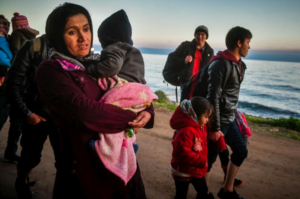
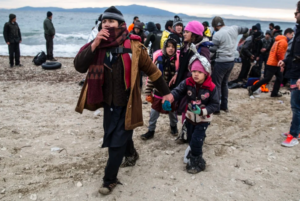
The Moria fire has certainly drawn attention to the problem. As Commission Vice-President Margaritis Schinas told MEPs, “Moria is a stark reminder that the clock has run out on how long we can live in a house half-built. The time has come to rally around a common, European migration policy.” She also sought to reassure doubters on both sides of the political divide.
“The Pact provides the missing pieces of the puzzle for a comprehensive approach to migration. No one Member State experiences migration in the same way and the different and unique challenges faced by all deserve to be recognised, acknowledged and addressed.” The Moria fire was certainly strange. It happened on a Tuesday, flaring up again the following day and wiping out most of the surviving tents. It led to some 400 children and adolescents being transferred to the mainland, which inevitably meant that the refugees themselves would be blamed.


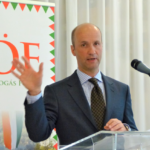
Nicolaus Fest, an Alternatif für Deutschland member of the right-wing Identity and Democracy group, felt it did not even deserve discussion. “Why are we putting ourselves at the mercy of events like this by putting on the Parliament’s agenda anything that is to do with refugees?” he asked. “We should wait for the criminal investigation into this incident to be concluded. It is too early to start a debate now.” Other members, like Dutch Greens MEP Tineke Strik and Birgit Sippel, Socialist group spokesperson on Civil Liberties, Justice and Home Affairs, disagreed, calling on member states to fulfil their promises. “Since March, ten EU countries have agreed to accept at least 1,600 refugee children from overcrowded camps on the Greek islands,” Ms. Sippel pointed out, “but only a fraction of this number have actually been relocated.” According to Human Rights Watch, the people affected by the fire have had limited access to shelter, food, water, sanitation facilities, and health care. That includes those who have contracted Covid-19. It’s further alleged that Greek security forces have used teargas and stun grenades on the displaced people who have protested against the dire living conditions since the fires.

Tensions between the asylum seekers and the local population are said to be high and the Commission’s new pact is no solution, according to Amnesty International’s EU Advocacy Director, Eve Geddie:
“Pitched as a fresh start, this pact is, in reality, designed to heighten walls and strengthen fences,” he wrote. “Rather than offering any new approach to facilitate bringing people to safety, this appears to be an attempt to rebrand a system which has been failing for years, with dire consequences.”
HUDDLED MASSES, GO AWAY
Many MEPs are deeply concerned about severe overcrowding in the Greek refugee camps. The Commission wants all twenty-seven member states to share the burden by taking in refugees but there is a problem with that idea: some countries resolutely refuse to countenance the idea while inevitably – for geographical reasons – the burden will fall disproportionately on Greece, Italy, Malta and Spain. Previous threats of penalties for uncooperative member states have been ignored by Hungary for a long time without any repercussions, other than a vague “tut, tut” from its neighbours. The European Commission plan would offer countries like Denmark, Austria, Poland and Hungary €10,000 for each refugee they accept, ostensibly to cover early costs of travel and housing. The Commission proposal also insists on rapid processing of asylum applications and a fast repatriation of those whose applications fail. Unfortunately for the Commission, if not for the failed asylum seekers, their home countries often refuse to accept them back. That’s something against which the EU cannot legislate.
It’s worth remembering here the words of the 19th century American poet, Emma Lazarus, whose poem, ‘The New Colossus’, is inscribed at the base of the Statue of Liberty:
“Give me your tired, your poor,
Your huddled masses yearning to breathe free,
The wretched refuse of your teeming shore,
Send these, the homeless, tempest-tossed, to me:
I lift my lamp beside the golden door.”
It’s clearly not a sentiment shared by US President Donald Trump. When an all-out war on drugs gangs was launched in El Salvador in 2014, quite a few of those caught in the crossfire, including children, tried to get to the border with the United States on foot to escape the violence.
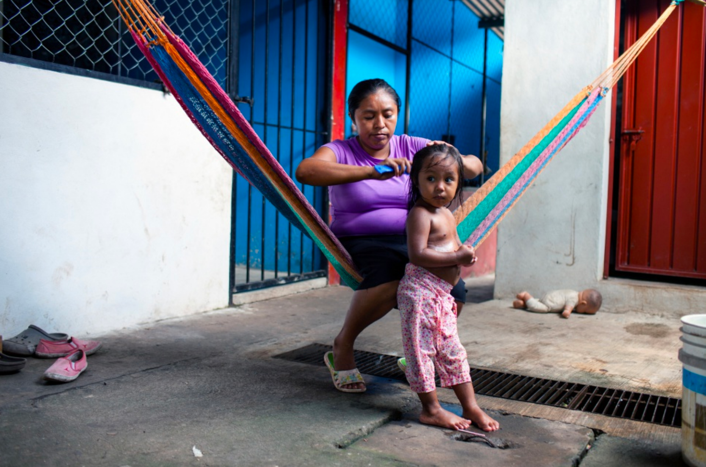
Trump falsely claimed that many of them were members of gangs, and it’s certainly true that El Salvador is not short of very violent and murderous gangs. It helped Trump to sell the idea of building a wall along the Mexican border. I can’t see him lifting a lamp beside a golden door. But Europe is far from innocent here, either. The Commission proposal is basically saying “give me your tired, your poor, your huddled masses yearning to breathe free” and we’ll try to bribe some country into accepting them. If we can’t find one, we’ll send them back again. It’s not quite the sentiment Emma Lazarus was trying to encourage.
Germany reported the largest influx of immigrants in 2018, according to the EU’s statistical office, Eurostat. Almost 894,000 people arrived, with the next most popular destination being Spain, with almost 644,000. The United Kingdom, no longer an EU state, of course, would have come third, with 604,000, although a number of British newspapers have claimed that Britain attracted the highest number of illegal immigrants, even though that is not true. Furthermore, most of the UK’s immigrants came from non-EU countries, despite political claims to the reverse: 202,000 (33.4%) from EU countries, 325,000 (53.8%) from outside the EU. Eurostat writes that 22 of the EU’s 27 member states reported more immigrants arriving than citizens leaving, but in Bulgaria, Croatia, Latvia, Lithuania and Romania the number of emigrants outstripped the new arrivals. For its size, Malta recorded the highest rate of immigration, with 55 immigrants for every one thousand of its population. A slight majority of would-be immigrants were male: 54% to 46% female, but it varied from country to country. In Croatia, 75% of immigrants were male, while in Portugal’s case, women immigrants outnumbered men, making up 53%.
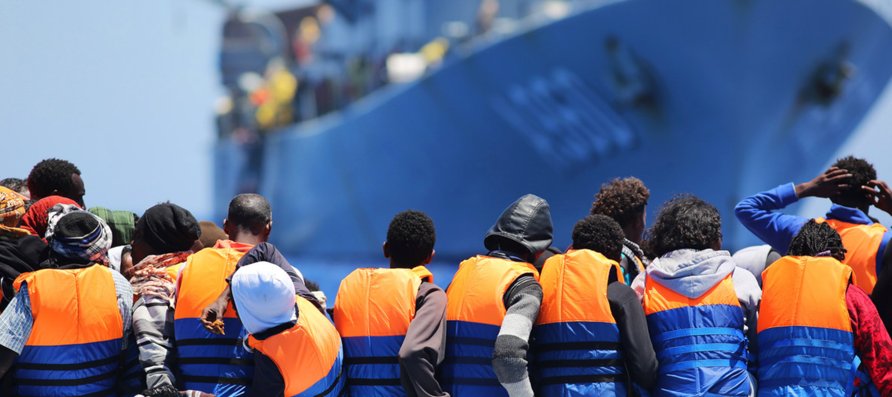
Strangers have seldom been welcomed. In the British humorous magazine, Punch, a supposed joke in 1854 ran the following dialogue: “Who’s ‘im, Bill? A stranger! ‘Eave ‘arf a brick at ‘im.” (Translation: “Who is that, Bill? A stranger? Throw a half-brick at him.” OK, so it was meant as a joke, even if it’s not funny, but jokes must start somewhere, and Punch tended to reflect popular sentiment, even if it didn’t necessarily approve of it. The European Council on Foreign Relations (ECFR), says that there has been an unprecedented increase in the numbers of refugees and other migrants entering Europe. Many of them were fleeing not only poverty but long-running conflicts, especially the war in Syria, where Russia and Iran were fighting Syrian opposition forces in a bid to keep the corrupt and murderous government of Bashar al-Assad in power, because it was in their national interests. It’s not because they like al-Assad. The peak came in 2015, when more than a million people arrived in Europe. According to the European Council on Foreign Relations (ECFR), most had travelled the eastern route, through Turkey, Greece and the Balkans. The number has fallen since 2016 but an average year still sees some 160,000 hopefuls turning up on Europe’s borders.
IN DUBLIN’S (UN)FAIR CITY
It would also be fair to say that in a strange and very bureaucratic way they also pass through Dublin. But it’s not the love of sweet Molly Malone with her cockles and mussels that proves an obstacle, it’s the latest iteration of the EU’s Dublin Regulation, which sets out the rules and procedures for dealing with asylum applications. It is far from faultless and remains highly controversial, dealing more with the legality of the process than with individual asylum seekers. In theory, it allocates responsibility for an asylum seeker to the country in which they were first registered. This is backed up by another EU body, EURODAC, which fingerprints all incoming immigrants or asylum seekers so that it’s easy to ascribe them to a particular country. This is, of course, not only an onerous system but it is also unfair to countries where most immigrants first arrive, such as Greece, Italy, Malta and Spain. They obviously cannot be held responsible for housing all those who seek a new life in Europe, most of whom would far rather reach Germany anyway. Of course, the system is very unfair to immigrants, too, but politicians often forget that. The aim of the Dublin Regulation was laudable, establishing which country should be responsible for processing applications. It is now in its third iteration as Dublin III and widely regarded as failing. It is extremely slow: the entire procedure can take more than eleven months, and nine months or more even if the applicant is sent back. Legal advice to applicants is free upon request, however, and decisions can be appealed.
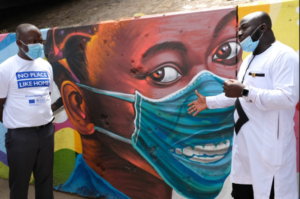
In a bid to fight the spread of COVID-19, the EU Delegation to Ghana joined the International Organisation for Migration (IOM), the Accra Metropolitan Assembly (AMA) and artists from the Ghana Graffiti Collective, to launch an initiative to use street art and graffiti to create awareness about coronavirus and migration © Eeas.europa.eu
It has a few other factors in its favour, too, such as guaranteeing a personal interview for every applicant, further guarantees for minors which consider the child’s best interests and it gives the possibility of reuniting them with relatives who are already settled. However, the big influx in 2015 put a huge strain on the asylum systems of member states and even on the Common European Asylum System (CEAS) itself. In May 2016, as part of a reform of the CEAS, the European Commission proposed an updated system, replacing Dublin, which promised to be more transparent and effective. In theory, the new system would automatically establish if any member state is having to handle a disproportionately large number of cases by comparing the number of applications with the size of the population and relative wealth of the country concerned. If a certain reference figure is exceeded, the applicants will be transferred to a different location to apply for asylum. Countries wanting to be excused from this process would be allowed to do so upon making what’s called a “solidarity contribution” for every applicant for whom it would otherwise have been responsible under the ‘fairness’ mechanism, the payment going to the country that has taken over their responsibility. The new Pact would also establish a new European Union Agency for Asylum (EUAA) for the first time.
Certainly, the existing system and its predecessors are not without critics. The United Nations refugee agency, the UNHCR, is not alone in finding fault. “The ‘Dublin’ system operates,” says its website, “on the assumption that, as the asylum laws and practices of the EU States are based on the same common standards, they allow asylum seekers to enjoy similar levels of protection in all EU Member States. In reality, however, asylum legislation and practice still vary widely from country to country, causing asylum-seekers to receive different treatment across Europe.” What’s more, the UNHCR makes it clear that it is by no means alone in disliking the way Dublin has worked. “In its 2008 evaluation,” the agency states on its website, “the European Parliament noted that, in the absence of harmonisation, ‘the Dublin system will continue to be unfair both to asylum seekers and to certain Member States’. The Dublin system increases pressures on the external border regions of the EU and harshly disrupts the lives of those fleeing to Europe for protection.” Hardly a ringing endorsement. This, however, was the Dublin II system, introduced in 2003. Later came the current system, Dublin III, which came into force in January 2014, which drew further negative comments. Now it’s to disappear altogether. Reforms to Dublin III were proposed in 2016 and 2018, but the new pact builds on and extends them, largely to win over member states reluctant to participate.
MOVING NORTH
Another UNHCR report focused on the operation of Dublin III from its inception up to 2016 and it does not make for cheerful reading. “This study was conducted at a time when some national asylum systems in Europe faced significant increases in applications for international protection, during 2015 and 2016,” it explains. “Against this backdrop, the findings reflect, at times, insufficient implementation of elements of the Dublin Regulation due to constraints on certain Member States’ asylum systems. This includes significant delays in conducting Dublin procedures and suspension of, or delays in, conducting personal interviews. However, the findings also demonstrate that Member States can, even when experiencing significant pressure, apply Dublin Regulation procedures in an efficient manner and in the best interests of applicants. Examples include the proactive use of the family reunion provisions (Articles 8, 9 and 10 of the Dublin III Regulation) and the ‘humanitarian’ clause (Article 17(2) of the Dublin III Regulation), where appropriate.”
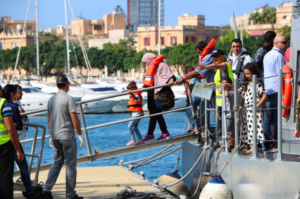
It’s also true that most Europeans do not know where migrants come from or why. They do not know how difficult it is for them to get as far as Europe’s border. Perhaps they don’t care, although they may ‘tut-tut’ after watching a short television news report about the dreadful conditions migrants face. As the ECFR reports, “Many Europeans are unaware of the challenges migrants face before reaching the coast of Libya and crossing the Mediterranean. A large proportion of migrants, most of them from sub-Saharan African countries, endure a long journey in extreme conditions during which some of them die. Niger is the main hub on the route to North Africa.” The Economic Community of West African States (ECOWAS) allows migrants free movement within West Africa itself, but once they reach Niger, they are classed as ‘illegals’ if they travel further north, which means they have to rely on the smugglers and traffickers of Libya and Algeria. It makes no difference if the migrants are poor families trying to escape starvation or if they have been forcibly displaced by armed conflicts in such places as Syria, Yemen and northern Nigeria. They are seen as nothing more than a source of income for the people smugglers.
Furthermore, the UNHCR explains, Africa is undergoing a population boom. The entire continent’s population is expected to double over the next three decades because of very high fertility rates. “Niger has the highest fertility rate in the world: 7.3 children per woman,” the report explains. This is the exact opposite of Europe, with its ageing population and falling birth rate. In Europe, many couples marry much later in life than they did twenty or thirty years ago, and they delay having a family for the sake of their careers. They may decide to forego a family altogether. Just like Africa’s poor, they want to enjoy a wealthier lifestyle than their parents or grandparents, and the demands of many career structures mean that progress is more likely without children to worry about. Of course, it may seem obvious that Europe’s human shortfall, caused by job considerations and a reluctance to take on family ties, could be easily made up by the large numbers seeking to head to Europe, largely in pursuit of the sorts of jobs many Europeans are reluctant to do. That’s not an idea that finds much support in countries of a more conservative persuasion, like, say, Hungary, which seems unlikely ever to agree to pay €10,000 to have an asylum applicant taken off its hands. The upsurge in migration resulting from the Syrian conflict, rather than inspiring sympathy and brotherly love actually sparked a wave of anti-immigrant policies that show no signs of going away.
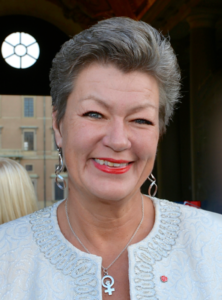
The European Commission finds itself trying to come up with policies that meet the urgent need without driving away the less sympathetic countries into ever-more xenophobic rhetoric. It’s perhaps to satisfy those doubters that Ylva Johansson, the EU Commissioner for migration, told a Brussels news conference that asylum seekers under the proposed new system “have the same rights for their application to be processed in a proper and fair way, but it has to be done very quickly.
This is an important message that you will be returned if you come to the EU and you don’t have the right to stay.” She also admitted, however, that no-one will like the new pact. Meanwhile, Vice-President for Promoting our European Way of Life, Margaritis Schinas, said of the Moria fire that it was: “a stark reminder that the clock has run out on how long we can live in a house half-built. The time has come to rally around a common, European migration policy.” Good luck with persuading the more anti-immigrant member states to agree.
SEA FEVER
Pity poor Greece, first port of call for many. When Kyriakos Mitsotakis was elected Prime Minister in July 2019, he promised reforms and a fairer way to deal with the countries’ migrants.
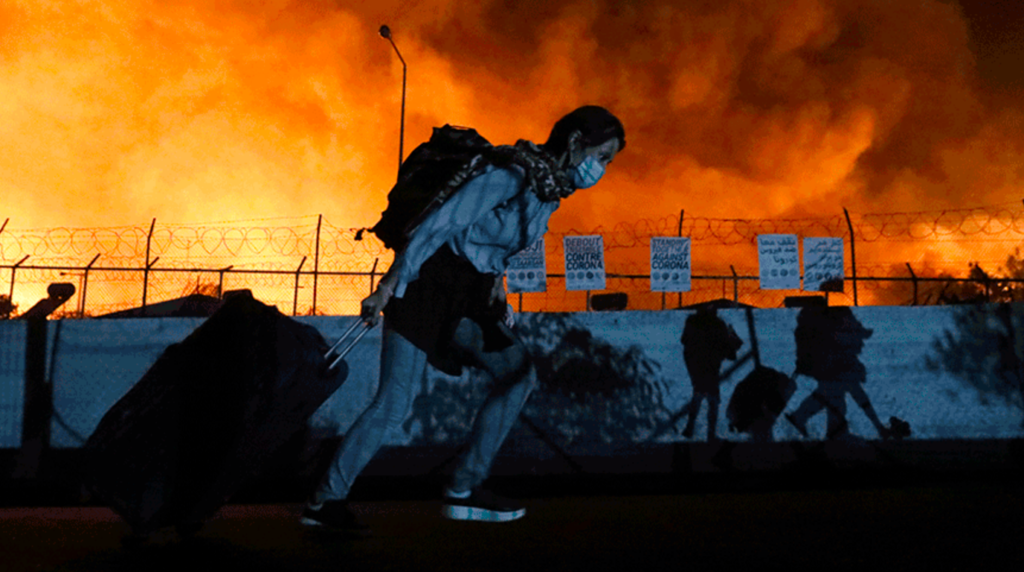
It didn’t really work out, according to the Migration Policy Institute. “Over its first year, Greece’s new government sought to calibrate a response addressing migration fatigue among Aegean island host communities taxed by the arrival of tens of thousands of asylum seekers over the past several years, pressure from the European Union to prevent onward movement, and tensions with Turkey.” Of course, the tensions with Turkey have worsened, and not just because of asylum seekers; Turkey’s determination to exploit undersea gas deposits in the Eastern Mediterranean have stretched tensions to breaking point. The reforms of Mitsotakis have shown few benefits. “Asylum proceedings remained painfully slow, EU burden-sharing was conspicuous in its absence, and repatriations of rejected asylum seekers had stalled,” reports the Migration Policy Institute.
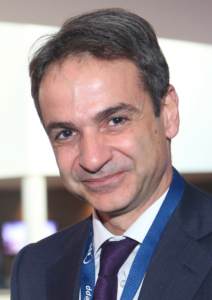
“These results prompted protests in the North Aegean in early 2020. As the government tried to reckon with these tensions, Turkish authorities unilaterally opened their western borders to asylum seekers, triggering sudden, large-scale movements toward Greece. While Turkey’s brinksmanship played out, the COVID-19 pandemic hit the region.” It could be called the perfect storm, except that it’s far from perfect for anyone.Meanwhile, there are signs of an increasing number of attempts to cross the Mediterranean by organised groups of migrants without the aid of people smugglers. This has been characterised by the arrival of small inflatables with only a few people on each. Partly it’s because of COVID-19 and the resulting lockdown. Italy’s far-right opposition politicians have been blaming the new migrants for an upsurge in COVID-19 cases in Italy. Matteo Salvini, leader of the right-wing Northern League, has claimed that infected migrants on Lampedusa mix with tourists and thus spread the disease worldwide. According to The Economist, Giorgia Meloni, whose Brothers of Italy party has its roots among Mussolini’s Fascists, wrote on Facebook that “the link between clandestine immigration and increases in infection cannot be ignored”. By parties such as his, of course, you may be sure it won’t be.
The European Commission’s new initiative has mainly been welcomed by organisations responsible for migrants and asylum seekers, including the International Organisation for Migration: “The IOM is pleased to see affirmation in the package that migration and mobility can be manageable under a comprehensive, rights-based, whole-of-route approach grounded in partnerships and cooperation,” says the IOM website. “While we have yet to assess it in detail, the proposal is a notable starting point that covers many dimensions of a complex, broad and often divisive issue,” according to Director General António Vitorino.
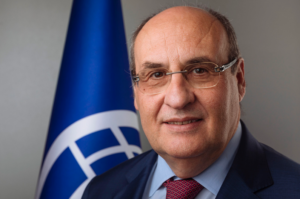
“It clearly recognizes that no one country can manage migration and mobility alone or in isolation. We remain optimistic that an international approach can become a positive reality for both migrants and societies.” The organisation points out that “most migration – including to the EU – happens in a safe and regular way, contributing to growth and dynamism when well managed. We have seen repeatedly how people on the move, when integrated and their rights are upheld, can be part of the solutions needed in our societies.” That may not be a widespread view, however.
In compiling its new pact on migration and asylum, the European Commission held consultations and examined data and statistics from such bodies as Eurostat, the frontier agency Frontex, as well as EASO (the European Asylum Support Office) and eu-LISA, the clumsily-named European Union Agency for the Operational Management of Large-Scale IT Systems in the Area of Freedom, Security and Justice. The resulting document outlined the situation facing the Commission. “Since the migration crisis of 2015, the number of arrivals and composition of flows have changed significantly, both between and along the different migratory routes. Additionally, there is significant variation of migratory pressure across countries and in terms of the tools applied to address it,” said the document. “The number of irregular arrivals to the EU dropped by 92% between 2015 and 2019, with Afghan (24% of the total), Syrian (17%), unspecified sub-Saharan nationals (10%) and Turkish (6%) as the most prominent nationalities.” The document also pointed out a strange anomaly: “Asylum applications have not followed the decreasing trend in irregular arrivals, meaning the ratio of asylum applications to irregular arrivals is higher today than it was in 2015.” This is what really lies behind proposals for a new pact, coupled with the stubborn resistance of some countries to the idea of admitting any more refugees. “While there were 1.2-million first-time asylum seekers applying for international protection in the EU and 374,314 registered irregular border crossings on the three main routes in 2016,” the report explains, “there were 612,685 first-time asylum seekers applying for international protection and 124,023 registered irregular border crossings in 2019.”
UPHOLDING THE LAW
The European Commission’s proposed pact would bring in integrated procedures, starting at the EU’s borders, comprising pre-entry screening of applicants, a single asylum procedure and also a quick way of effecting returns of those rejected. The EU has to be cautious here, of course, because sending an applicant back into danger would count as refoulement, which would be against international law. It is a principle of what is called ‘customary international law’, based as it is on customs that would be taken into account by any court, including the International Criminal Court, the EU’s Court of Justice and the European Court of Human Rights, among several others. It applies even to states that are not parties to the 1951 Geneva Convention relating to the status of refugees, or its 1967 protocol, which extended it to cover those affected by events that had happened after 1951. Trucial laws, as they are sometimes known, are those that affect all aspects of international relations and are based on laws first formulated in Ancient Rome. However, Rome was not much troubled by migration or asylum seekers, and the EU seeks to keep its new pact within the law: “All necessary guarantees will be put in place to ensure that every person has an individual assessment that takes account of the vulnerabilities of certain applicants, in full respect of their fundamental rights, including the principle of non-refoulement,” it says.
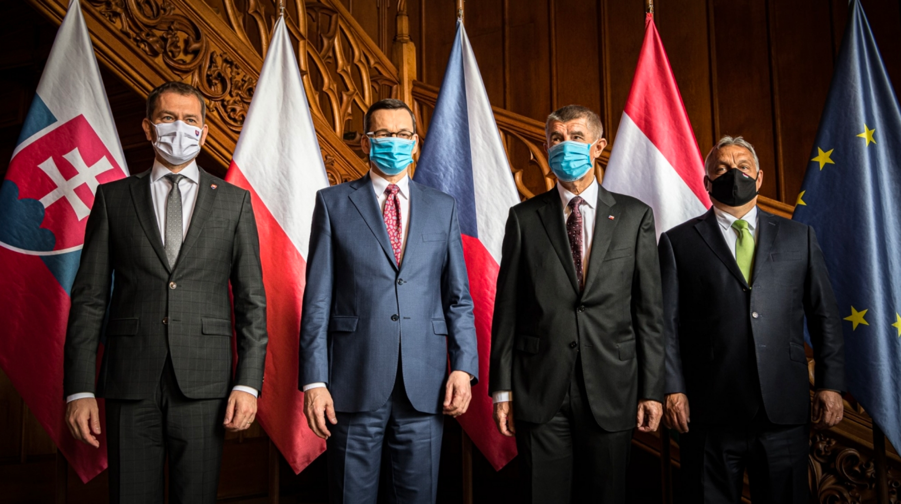
However, the Visegrád group – Poland, Hungary, the Czech Republic and Slovakia – have rejected the pact. The first three want nothing to do with helping migrants; Slovakia is still considering it.
However, for EU lawmakers, there is another problem. “Migrants disembarked following search and rescue (SAR) operations represent a significant share of arrivals, reaching 50% of total arrivals by sea in 2019,” explains the Commission proposal. “These arrivals have a direct impact on the EU’s migration and asylum systems, as well as on the effectiveness of integrated border management, due to the fact that Member States cannot apply the same tools that are applied for irregular crossings by land or by air. For instance, there are no official border checks for SAR arrivals, which not only means that points of entry are more difficult to define, but also that third-country nationals have no pointers where to officially seek entry.” Neither are those who have taken risks and spent money to reach Europe likely just to pack up and go home willingly if their applications are rejected. So, apart from the SAR arrivals, whose justifications for seeking asylum are hard to assess, there are also people who, while not fulfilling the conditions required for entry, request international protection during border checks. There are also those who slipped through any border controls but were later apprehended within the country they were seeking to settle in. Can these people, off the scale as far as normal asylum applications are concerned, win citizenship or at least the right to remain in their country of choice?
The Pact also contains a ‘solidarity mechanism’, offering new forms of mutual support among member states. The Commission document says that “The new Pact recognises that no Member State should shoulder a disproportionate responsibility and that all Member States should constantly contribute top solidarity.” It sounds like a very good idea, based on the assumption that all member states share an equal sense of responsibility where migrants and asylum seekers are concerned. They don’t, of course, but it’s a nice idea. It’s a bit vague in places, however, to be honest. Take, for example, the very well-intentioned solidarity mechanism for countries under unfair pressure. “The mechanism is intended to be triggered when the asylum and return capacities of a Member State are no longer able or risk not being able to cope with the number of migrants on the territory,” says the Commission. “There will be no quantitative threshold for defining this, but instead a holistic assessment by the Commission based on all the information at its disposal, including for example the number of asylum applications, search and rescue cases, irregular border crossings and returns.” I can see problems ahead, but there always will be where immigration is concerned. The plain fact is that a lot of people would like to creep under the protective wing of the European Union, like chicks with a mother hen. But too many in Europe oppose migration in any form for a single neat solution to work without opposition. Perhaps people should be aware of words written by the English philosopher and statesman Francis Bacon (1561-1626), who wrote that “If a man be gracious and courteous to strangers, it shows he is a citizen of the world.” As the outcome of Britain’s Brexit referendum showed, not everyone, it seems, wants to be a citizen of the world. Some prefer to lock the doors, draw the curtains and hope the rest of the world simply goes away.
THE UN HUMAN RIGHTS OFFICE OHCHR, IS CALLING FOR URGENT ACTION TO ADDRESS THE “UNIMAGINABLE HORRORS” FACED BY MIGRANTS ATTEMPTING TO CROSS THE CENTRAL MEDITERRANEAN SEA IN SEARCH OF SAFETY IN EUROPE.
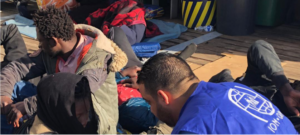
OHCHR highlighted what it called a “cycle of violence” whereby people faced deprivation and abuse in Libya, only to be left to drift “for days at sea”. Often, their boats were intercepted dangerously by the authorities and returned to Libya, the UN rights office said, noting that migrants then faced arbitrary detention, torture and other serious human rights violations.
And the situation has become even more acute amid the COVID-19 pandemic, OHCHR continued in its statement, as humanitarian search and rescue vessels have been prevented from heading out to sea, while there is also a lack of access by civil society groups that help migrants.
“What is happening to migrants…is the result of a failed system of migration governance…marked by a lack of solidarity forcing frontline States…to bear the brunt of the responsibility”, said UN High Commissioner for Human Rights, Michelle Bachelet.
Fleeing Libya
Despite the lack of sufficient safe and regular migration channels, migrants continue to take the precarious sea journey, often multiple times – encountering danger and suffering.Arbitrary detention, torture, trafficking, sexual abuse, forced labour and other serious human rights violations were some of the horrors that migrants in Libya described.And many reported being intercepted by the Libyan Coast Guard, including having their boats rammed or shot at, causing vessels to capsize or people to desperately jump into the water.While some reports reflected that commercial vessels did not come to their assistance, others affirmed that commercial ships picked them up only to return the individuals to detention centres in Libya.OHCHR pointed out that if true, “these are serious allegations of failure to assist people in distress at sea and possible coordinated push-backs that should be duly investigated”.
Mission to Malta
The call followed a week-long UN rights mission to Malta that engaged Government officials, UN partners, migrant community leaders, civil society organizations, speaking to 76 migrants from 25 different countries.Some migrants there explained that they had been detained for several months, with only one change of clothing and little access to daylight, clean water and sanitation.They also reported severe overcrowding, poor living conditions and limited contact with the outside world, including lawyers and civil society organizations.
“You’re in jail in Libya and now you come to Europe and prison again”, one migrant testified.
“The pressures on the reception system in Malta have long been known but the pandemic has clearly made an already difficult situation worse”, said Ms. Bachelet.
Despite COVID-19 challenges, “human rights must always be upheld and those who are confined, out of sight as it were, must not be forgotten”, she continued, appealing for European Union States to adopt “a principled approach to migration” and tackle “the shocking conditions” faced by migrants in Libya, at sea, and often when they finally reach Europe, and supposed safety.

